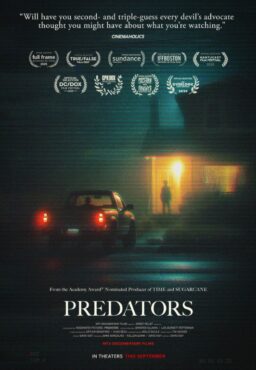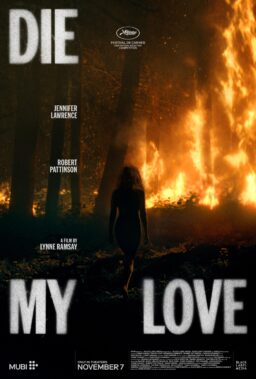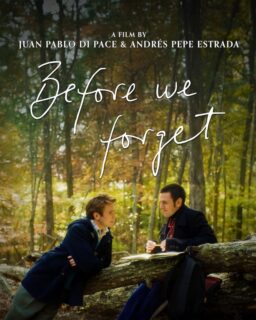When the book of 20th century popular entertainment is written, Frank Sinatra will get a chapter as the best singer of his time. As an actor, he will be remembered for the good films, and for a distinctive screen persona as a guy who could win a heart with a song.
The image that lingers is from “Young at Heart,” when he pushed back his hat, lit a cigarette, sat down at a piano and sang to Doris Day and broke her heart. He never had the looks to be a matinee idol, but he had a voice – the Voice – and he had a screen presence, and for a time in the 1950s, Frank Sinatra was one of the most interesting and successful actors in American movies.
But he will not be remembered as one of the greatest movie stars of his time, maybe because he simply never cared enough to make it his business. What is remarkable is that he made more than 60 films, was often at the top of the box-office charts, won two Oscars (one the honorary Hersholt award) and was nominated for another, and had starring roles spanning five decades – even though during most of that time movie acting, for Sinatra, was basically a side line.
The saga of how he got into the movies in the first place has become a show-business legend. By 1953, his singing career was (temporarily) on the skids and he was considered a has-been, but he persuaded Harry Cohn, the boss of Columbia Pictures, to let him play the supporting role of Maggio, a wise guy enlisted man, in “From Here to Eternity.”
How and why he got that role has been the subject of speculation ever since. The version absorbed by most people is the one fictionalized by Mario Puzo in his novel The Godfather, in which a Sinatra-like character named Johnny Fontaine was friendly with the Corleone family, which made a Hollywood mogul an offer he couldn’t refuse and backed it up with a special-delivery package: the severed head of his beloved racehorse, slipped between his sheets while he slept.
Those events, of course, never happened, and Sinatra and his family bitterly resented the popular belief that they contained an element of truth. But did the mob have anything to do with Sinatra’s getting the role that turned his career around? There is no evidence at all that it did, but throughout his career, it was informally understood that Sinatra had powerful “friends,” and that image did his career no harm. It enhanced his raffish aura as a veteran of many a late night in a smoky saloon (“It’s quarter to 3”), singing the love ballads of a lonely fighter who could get up off the mat for one more bout with romance.
In a way, you wanted to believe Sinatra was “connected,” because the clout was part of the appeal. The legends that collected about him often involved his influence, his feuds, his ability to get things done, or keep them from being done. There were two Sinatra images that overlapped, like a 3-D picture if you’re not wearing the glasses: The beloved entertainer, and the powerbroker with an element of menace. Henry Kissinger observed that power is an aphrodisiac, and certainly Sinatra’s power, real and imagined, magnified his sexiness. A famous Esquire cover in the 1960s showed him with a cigarette to his lips; the rest of the cover was covered with outstretched hands holding cigarette lighters.
No matter how Sinatra got cast in “From Here to Eternity,” it was the event that lifted the curtain on the long second act of his remarkable career. With that Oscar-winning role, and the films and songs that followed it, he put to rest his image as a crooner and teenage idol and began to fashion his mature image, as the singer who was better with a lyric than anyone else ever had been. Sammy Cahn, who wrote a lot of songs that Sinatra sang, told me that he would write a lyric, hear Sinatra perform it, and think, “Oh, yeah, that’s what I wrote.”
After “From Here to Eternity,” Sinatra cemented his reputation as a film actor in a remarkable series of box-office and critical hits in the mid-1950s: the film noir “Suddenly,” “Guys and Dolls,” “The Man With the Golden Arm,” “The Tender Trap” and “Young at Heart.”
These were all roles crafted for, and suited to, his emerging image as an underdog with a heart. Sinatra was nominated for best actor for “The Man With the Golden Arm,” Otto Preminger’s controversial version of the Nelson Algren novel, which defied the Production Code’s ban on movies depicting drug addiction. In “Guys and Dolls,” he was Damon Runyon’s professional gambler Nathan Detroit, the operator of “the oldest-established permanent floating crap game in New York,” and sang about “ever- loving Adelaide.”
For Sinatra in the mid-1950s, being a movie actor was central to his career. Before and after that golden period, he had his mind on other things.
In 1941, when he made his film debut as a saloon singer in “Las Vegas Nights” and sang “I’ll Never Smile Again,” he was, of course, the top singing idol in the world – the Beatles of his time. It was Sinatra, indeed, who inaugurated the 20th century spectacle of screaming, orgiastic fans.
Sinatra’s 1940s films all referred, in one way or another, to his off-screen image as a matinee idol and popular singer. The best of them was probably Gene Kelly’s “On the Town” (1949), with Sinatra and Kelly as sailors with 24-hour passes in Manhattan. The Leonard Bernstein score evoked a giddy sense of freedom, which Kelly exploited with a Hollywood first: He left the sound stages for a week of location shooting in New York City, the first time a musical had done that, as the characters played by him and Sinatra pursued Vera Ellen, Ann Miller and Betty Garrett around the town.
There were other big titles for Sinatra in the 1940s, including “Anchors Aweigh” (1945), “Till the Clouds Roll By” (1946) and “Take Me Out to the Ball Game” (1949).
As his musical career entered its richest period, from the mid-1950s to the mid-1960s, his films tended to be less remarkable. One of his best performances was as a would-be writer in Vincente Minnelli’s “Some Came Running” (1958), a project that signaled the rise of the Rat Pack movie, in which he joined friends, especially Sammy Davis Jr., Dean Martin, Angie Dickinson and Shirley MacLaine, to make movies in which the relaxed ambience betrayed the presence of a director who had been hired, rather than the one who had hired him. There’s fun to be had in “Ocean's Eleven” (1960), with the Pack again, but it’s relaxed and selfcongratulatory; Sinatra had entered a middle age of great power and influence, in which he didn’t need to try as hard on the screen, or care as much about each movie.
But there was still one great film left: John Frankenheimer’s “The Manchurian Candidate” (1962), with its chilling Cold War plot about Sinatra and Laurence Harvey as U.S. soldiers brainwashed by the Communist Chinese in Korea, as part of a plot to “activate” Harvey to assassinate a president. This was perhaps the best single film Sinatra ever made. But typically, its artistry took second place in his thinking to its personal implications; when his friend, John F. Kennedy, was assassinated in 1963, Sinatra, as its producer, held it out of release for many years “out of respect.” Only after 25 years had passed, in 1988, did he once again allow it to be shown.
If Sinatra had never made another film after “The Manchurian Candidate,” his ultimate reputation as a movie star would have remained much the same. He made some well-crafted crime movies, including “Tony Rome” (1967) and “The Detective” (1968), but already he had the reputation of wanting to work fast, of allowing his directors just a few takes. During the 1970s, he made not a single film, but in 1980, he returned for “The First Deadly Sin,” a hard-boiled crime melodrama in which he turned in an effective performance. He was coasting, however, in the dreadful “Cannonball Run II” (1984), in which he appeared only in one-shots, never in scenes with the other actors.
I received a letter from Sinatra once. I’d written a piece about his career, suggesting (not with blinding originality) that he did it “his way.”
“That would have to be the most flagrant lie,” Sinatra wrote, “because if I listed everybody who helps me every day and whom I need, this letter would run 90 pages.” Sinatra was playing with the lyric. True, he didn’t do it alone. But he did it his way.











